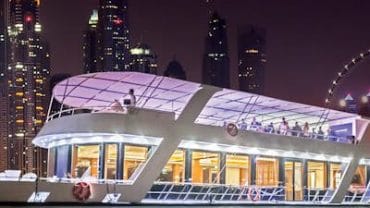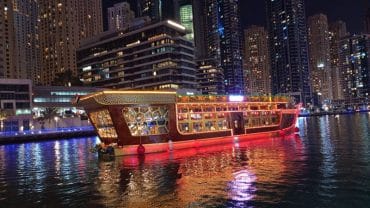Unveiling the Burj Khalifa: A Journey Through the World’s Tallest Skyscraper
Standing proudly against the Dubai skyline, the Burj Khalifa is more than just a skyscraper; it is a testament to human ingenuity and ambition. At 828 meters, it reigns as the world’s tallest building, captivating visitors with its unparalleled height and stunning architectural design. But the Burj Khalifa is not merely a feat of engineering; it is a beacon of culture, luxury, and innovation.
As we embark on this journey through the world’s tallest skyscraper, we’ll explore its fascinating history, the cutting-edge technology that brought it to life, and its breathtaking observations that offer a unique view of the vibrant city below. Discover the secrets behind its construction, the challenges faced during its development, and the indelible mark it has made on Dubai’s cultural landscape. Join us as we unveil the layers of this architectural marvel and dive deep into what makes the Burj Khalifa a symbol of modern achievement and a must-visit destination for millions.
The Architectural Marvel: Design and Engineering
Standing as a modern day Colossus, the Burj Khalifa is an architectural marvel that pushes the boundaries of design and engineering. Conceived by the renowned architecture firm Skidmore, Owings & Merrill, the design of the Burj Khalifa is a blend of modernity and tradition, inspired by the hymenocallis flower, a regional desert flower known for its unique shape. The structure’s Y-shaped tripartite floor geometry not only provides stability but also maximizes the views of the Arabian Gulf and the city of Dubai. This innovative design ensures that the building can withstand the harsh desert winds and the immense gravitational forces acting upon it.
The structural system of the Burj Khalifa is nothing short of revolutionary. The building employs a buttressed core, which is a high-performance, reinforced concrete hexagonal core, supported by a series of wings. This system effectively distributes the weight and stabilizes the structure, enabling it to reach an unprecedented height. Additionally, the use of high-performance concrete was crucial in the tower’s construction, as it had to be pumped to extreme heights—an engineering feat in itself. Each element of the design and construction process was meticulously planned and executed to ensure that the Burj Khalifa could stand tall and resilient.
The engineering challenges didn’t end with the structural system. The building also features the world’s highest aluminum and glass façade, designed to withstand Dubai’s extreme heat. The cladding system consists of reflective glazing, aluminum and textured stainless steel spandrel panels, and vertical tubular fins. This not only enhances the building’s aesthetic appeal but also significantly reduces heat gain. Moreover, the Burj Khalifa incorporates a range of advanced technologies, including the world’s fastest double-deck elevators, which can travel at speeds of up to 10 meters per second. These elevators provide access to the observation decks and other key areas, making the journey within the Burj Khalifa as awe-inspiring as the view outside.
A Brief History of the Burj Khalifa’s Construction
The journey to create the Burj Khalifa began in 2004, with the vision of transforming Dubai into a global city and a hub for tourism and business. The project’s announcement by Emaar Properties marked the beginning of an ambitious endeavor that would take over six years to complete. The initial phase involved the excavation and piling, where over 45,000 cubic meters of concrete, weighing more than 110,000 tons, were used to create the foundation. This massive base was essential to support the skyscraper’s immense weight.
The construction of the superstructure commenced in 2005 and was a testament to human perseverance and ingenuity. Each floor of the Burj Khalifa was constructed in cycles, with up to one floor being completed every three days. This rapid progress was made possible through the use of innovative techniques such as jump forms and high-capacity pumps that transported concrete to unprecedented heights. By the time the tower reached its final height in January 2009, it had consumed approximately 330,000 cubic meters of concrete, 39,000 metric tons of steel rebar, and had taken millions of man-hours to complete.
Despite the scale of the project, the construction of the Burj Khalifa was not without its challenges. The extreme weather conditions in Dubai, including high temperatures and strong winds, posed significant obstacles. To mitigate these challenges, construction often took place at night when temperatures were cooler. Additionally, the wind tunnel testing was conducted to ensure that the building could withstand the powerful desert winds. The dedication and hard work of the international team of architects, engineers, and workers culminated in the completion of the Burj Khalifa, which officially opened on January 4, 2010, with a grand ceremony attended by dignitaries from around the world.
Key Features and Attractions of the Burj Khalifa
The Burj Khalifa is not just an architectural marvel; it is a treasure trove of attractions and features that draw millions of visitors each year. One of the most notable features is the At the Top observation deck located on the 124th floor, which offers panoramic views of Dubai’s skyline. Equipped with high-powered telescopes, visitors can enjoy an unparalleled view of the city, the desert, and the ocean beyond. For those seeking an even higher vantage point, the Burj Khalifa Sky on the 148th floor provides an outdoor terrace and a luxurious lounge, allowing guests to experience Dubai from a staggering height of 555 meters.
In addition to the observation decks, the Burj Khalifa houses the Armani Hotel Dubai, which occupies the lower levels of the tower. Designed by fashion icon Giorgio Armani, the hotel exudes sophistication and luxury, offering guests a unique blend of elegance and comfort. The hotel features 160 guest rooms and suites, as well as several world-class dining options, including the Armani/Ristorante, which offers a fine-dining experience with a focus on Italian cuisine. The hotel also includes the Armani/SPA, providing a range of treatments designed to rejuvenate the body and mind.
The Burj Khalifa is also home to a number of corporate suites, residential apartments, and the exclusive Atmosphere restaurant, located on the 122nd floor. Atmosphere is renowned for its exquisite cuisine and breathtaking views, making it a popular destination for both locals and tourists. The building’s extensive amenities also include fitness facilities, swimming pools, and an exclusive lounge for residents. The combination of these attractions and features ensures that the Burj Khalifa offers a comprehensive and luxurious experience for all who visit.
The Burj Khalifa Experience: Observation Decks and Views
The observation decks of the Burj Khalifa offer an experience like no other, providing visitors with a unique perspective of the city from staggering heights. The journey to the top begins with a multimedia presentation that chronicles the history of Dubai and the construction of the Burj Khalifa. As visitors ascend in the high-speed elevators, they are transported to a world where the boundaries between earth and sky blur, and the panoramic views reveal the full grandeur of the city below.
At the Top, located on the 124th floor, is the most popular observation deck. It features an outdoor terrace and floor-to-ceiling glass walls that offer unobstructed views of Dubai. Visitors can use high-powered telescopes to zoom in on key landmarks and learn more about the city’s history and development. The observation deck also includes interactive displays that provide information about the construction and design of the Burj Khalifa, allowing visitors to gain a deeper understanding of the engineering marvel they are standing within.
For those seeking an even more exclusive experience, the Burj Khalifa Sky on the 148th floor offers the highest observation deck in the world. The journey to this level includes a guided tour, where visitors are treated to personalized attention and insights into the building’s unique features. The outdoor terrace provides a stunning vantage point, while the luxurious lounge offers a comfortable space to relax and soak in the views. The Burj Khalifa Sky experience also includes refreshments and a commemorative certificate, making it a memorable addition to any visit to Dubai.
Sustainable Practices in the Burj Khalifa
In addition to its architectural and engineering feats, the Burj Khalifa is also a model of sustainability, incorporating a range of eco-friendly practices and technologies. The building’s design includes several features aimed at reducing its environmental impact, such as a condensate collection system that captures water from the building’s air conditioning units. This system collects an average of 15 million gallons of water annually, which is then used for landscaping and cooling the building, significantly reducing the demand for potable water.
The Burj Khalifa also employs an advanced energy-efficient lighting system that reduces electricity consumption. The exterior of the building is equipped with LED lights that are not only energy-efficient but also provide dynamic lighting displays that enhance the tower’s aesthetic appeal. Inside, the use of energy-efficient lighting fixtures and control systems ensures that electricity usage is minimized. The building’s high-performance façade also plays a critical role in its sustainability, with reflective glazing and insulation materials that reduce the heat gain and therefore the need for extensive air conditioning.
Furthermore, the Burj Khalifa is part of a larger sustainable urban development initiative in Downtown Dubai. The development includes extensive green spaces, pedestrian-friendly areas, and efficient public transportation options, all designed to reduce the carbon footprint of the area. The integration of sustainable practices in the design, construction, and operation of the Burj Khalifa demonstrates a commitment to environmental responsibility and sets a benchmark for future high-rise buildings around the world.
Cultural Significance of the Burj Khalifa in Dubai
The Burj Khalifa is more than just a skyscraper; it is a symbol of Dubai’s rapid development and its ambitions on the global stage. The tower has become an iconic landmark, representing the city’s transformation from a modest trading post to a bustling metropolis known for its innovation and luxury. The Burj Khalifa stands as a testament to Dubai’s vision and determination, embodying the spirit of progress and the city’s aspiration to be a leader in the modern world.
The cultural significance of the Burj Khalifa extends beyond its physical presence. The tower has played a pivotal role in shaping Dubai’s identity, attracting tourists, businesses, and investors from around the world. It has become a focal point for major events and celebrations, including the annual New Year’s Eve fireworks display, which is watched by millions globally. The Burj Khalifa’s prominence has also been highlighted in various films, documentaries, and media, further cementing its status as a global icon.
Moreover, the Burj Khalifa has become a source of pride for the residents of Dubai and the United Arab Emirates. It symbolizes the country’s achievements and its commitment to pushing the boundaries of what is possible. The tower’s presence in the heart of Dubai serves as a reminder of the city’s rich history, its vibrant present, and its promising future. As a cultural landmark, the Burj Khalifa continues to inspire and captivate people from all walks of life, making it an integral part of Dubai’s cultural landscape.
Visitor Information: Tips for Exploring the Burj Khalifa
For those planning to visit the Burj Khalifa, there are several tips to ensure a smooth and enjoyable experience. It is highly recommended to purchase tickets in advance, as the observation decks are extremely popular and can sell out quickly. Booking online allows visitors to choose their preferred time slot and avoid long queues. Additionally, visiting during off-peak hours, such as early morning or late evening, can provide a more relaxed experience with fewer crowds.
When visiting the observation decks, it is important to dress appropriately. While there is no strict dress code, it is advisable to wear comfortable clothing and footwear, especially considering the time spent walking and standing. The temperatures can vary significantly between the indoor and outdoor areas, so bringing a light jacket or sweater is recommended. Visitors should also be prepared for the security screening process, which is similar to airport security and requires the removal of items such as belts and jackets.
For those looking to make the most of their visit, combining the trip to the Burj Khalifa with other nearby attractions can enhance the experience. The Dubai Mall, located at the base of the tower, offers a wide range of shopping, dining, and entertainment options. The Dubai Fountain, also situated at the base, features a spectacular water and light show that can be enjoyed from the observation decks or up close. Planning the visit around the fountain showtimes can provide an additional layer of enjoyment to the overall experience.
Events and Celebrations at the Burj Khalifa
The Burj Khalifa is not only a marvel of architecture but also a premier venue for a wide range of events and celebrations. One of the most anticipated events is the annual New Year’s Eve fireworks display, which attracts thousands of spectators to Downtown Dubai and millions of viewers worldwide. The dazzling display of lights and fireworks, set against the backdrop of the towering Burj Khalifa, creates a breathtaking spectacle that is celebrated as one of the best New Year’s Eve events globally. This celebration includes live performances, music, and a vibrant atmosphere that makes it a memorable way to ring in the new year.
Throughout the year, the Burj Khalifa hosts a variety of cultural and entertainment events, including art exhibitions, music concerts, and fashion shows. The Armani Hotel Dubai often collaborates with international artists and designers to host exclusive events that attract celebrities and high-profile guests. The tower’s observation decks and lounges are also popular venues for corporate events, private parties, and special occasions, offering a unique setting with unparalleled views of the city.
The Burj Khalifa also participates in national celebrations and significant global events. During the UAE National Day, the tower is illuminated with the colors of the national flag, and special events are held to commemorate the occasion. The tower also joins in global celebrations such as Earth Hour by dimming its lights to raise awareness about environmental conservation. These events not only enhance the cultural vibrancy of Dubai but also reinforce the Burj Khalifa’s status as a symbol of unity and celebration.
Conclusion: The Burj Khalifa’s Place in Modern Architecture
The Burj Khalifa stands as a pinnacle of modern architecture, representing the zenith of human achievement in design, engineering, and innovation. Its towering presence on the Dubai skyline is a testament to what can be accomplished when vision, ambition, and technology converge. The skyscraper’s unique design, advanced engineering solutions, and sustainable practices have set new standards for high-rise buildings around the world, making it a benchmark for future architectural endeavors.
Beyond its physical structure, the Burj Khalifa has had a profound impact on Dubai’s cultural and economic landscape. It has become a symbol of the city’s transformation and its aspirations, attracting millions of visitors and serving as a focal point for global events and celebrations. The tower’s significance extends beyond its role as a tourist attraction; it embodies the spirit of progress and innovation that defines Dubai and the United Arab Emirates.
As we look to the future, the Burj Khalifa will continue to inspire and captivate people from all over the world. It is a reminder of what can be achieved with determination, creativity, and a relentless pursuit of excellence. The Burj Khalifa’s legacy will endure, not only as the world’s tallest skyscraper but as a symbol of human ingenuity and the boundless possibilities of modern architecture.



Comment (0)